The exhibition delivers an overview of the remarkable career of Alberto Giacometti, a peculiar artist who has marked the world of modern art.
By Sarah Duchêne – Anglo American University
From Paris to Prague for the very first time ever, an impressive exhibition of Alberto Giacometti is taking place at the National Gallery Prague until the 1st of December. In collaboration with the Foundation Giacometti, more than 170 works trace the history of the artist including not only his sculptures but also paintings and drawings.
Through this chronological exhibition, viewers will discover his earliest works, and then follow his progress in Paris after his encounter with the Surrealists there. The outstanding number of works also reveals the artist’s polymath and perseverance.
Since his early childhood, Giacometti (born 1901 in Switzerland) was raised in art by his father, Giovanni Giacometti, who was an Impressionist painter. While most children play with toys at this age, Alberto made his first sculpture at the age of 13. He also made many Neo-Impressionist paintings in his youth. In 1922, he moved to the City of Lights to study at the Académie de la Grande Chaumière where his sculptures revealed his new interest in Cubism.
His entry into André Breton’s Surrealist circle was the turning point in his career. After this, Giacometti gained attention for one of his most famous sculptures from this time, Suspended Ball (1930-31). This floating ball on a crescent locked in a cage was described by Salvador Dali as the prototype for “an object with a symbolic function.” This unusual sculpture mixes dream and eroticism, and it is one of the centerpieces of the current exhibit in Prague.
Giacometti’s Surrealist phase ended a few years later. He became more concerned with the question of the human head and the model’s gaze, and less interested in movement. For him, the mystery of the human head became the seat of a human being from his perspective.
For models, he mostly used his younger brother Diego, or close friends only. His fascination with the head also appeared in many drawings and paintings. At this point, his shift from Surrealism seemed to be philosophical, as an Existentialist more focused on the human being. Jean-Paul Sartre even wrote essays about Giacometti’s art and his question of perception.
Besides the head, the size of the sculptures remains a special trait of Giacometti’s art. His early works were sometimes so tiny that they fell apart. One of his most famous tiny sculptures is the figure of Isabelle Delmer, one of his close friends, placed on a pedestal. The fact that they are so tiny reflected the distance he instituted between him and his models.
Giacometti once said, “But wanting to create from memory what I had seen, to my terror the sculptures became smaller and smaller.” His sculptures changed after World War II when he started to create the taller and highly slender figures that he is most famous for today.
Alberto Giacometti was not a typical artist; he lived only for his art. He had an unusual determination, a passion for his sculptures to the point that he almost lived in his studio. It looked like a mess; it was tiny and dark, but he liked it that way. To carefully look over his many sculptures, paintings and drawings is the only way to understand, or maybe not, the career of one the most influential artists of his century.
For more information about the exhibition, see the website for the National Gallery Prague.
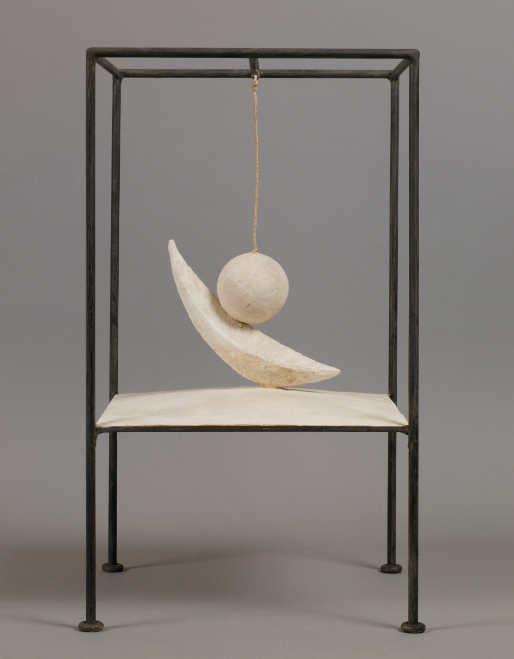
Alberto Giacometti, Zavěšená koule, 1930–1931, © Estate Giacometti (Fondation Giacometti + ADAGP) Paris, 2019
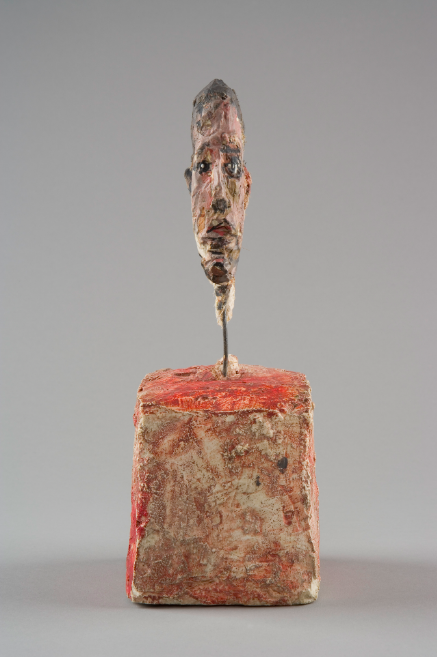
Alberto Giacometti, Hlava muže na podstavci, 1949–1951, © Estate Giacometti (Fondation Giacometti + ADAGP) Paris, 2019
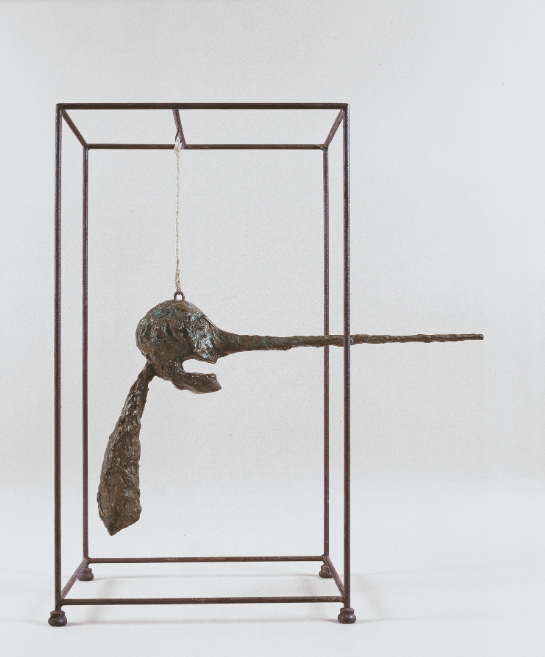
Alberto Giacometti, Stojící žena, kolem 1961, © Estate Giacometti (Fondation Giacometti + ADAGP) Paris, 2019
There’s no easy way to buy, send or spend cryptocurrency in person — not even for a slice of pizza or a cup of coffee, or so it’s been said. Meanwhile, the number of physical merchant locations that accept crypto payments keeps growing.
As of late October 2019, 15,558 business venues worldwide were accepting Bitcoin as a method of payment, up 18% from a year earlier, according to Coinmap.org. The crowdsourced heatmap, devised by Satoshi Labs in 2013, draws on input from consumers and merchants.
While Europe remains the hottest continent for in-person Bitcoin transactions, the most torrid city is now Ljubljana in Slovenia, with 314 venues. Last year, Prague held that distinction.
In Prague, one can reportedly rent apartments and attend films paying in crypto. The Czech capital counts 170 venues (bars, restaurants, hotels, cinemas, and other attractions) where Bitcoin is accepted as a method of payment.
This also includes a dozen ATM’s where people are able to take out cash from digital currency accounts, and more than a dozen restaurants, cafés, and shopping venues.
Prague is home to the Bitcoin Coffee, part of the Paralelni Polis building, an experimental alternative centre launched by art group Ztohoven in the Holešovice district, which also hosts a co-working space and an “Institute of Cryptology”.
Bitcoin transaction costs have dropped dramatically over the past two years — high fees were another reason cited by Stripe for leaving the business. The average Bitcoin transaction fee reached a high of $54.90 on Dec. 21, 2017, but on Oct. 22, 2019, it was less than one hundredth that amount: $0.53 per transaction.

Source: coinmap.org
An excellent trip for a pleasant walk in Prague is to go to Obora Hvězda (Hvězda Game Reserve) and Letohrádek Hvězda (The Hvězda Summer Palace,) in Prague 6.
The area has maintained its atmosphere, mainly because of the summer palace with its atypical six-pointed star (hvězda) shape – from which both the park and the palace get their names.
Even though it is located in the city of Prague, it guarantees a quiet and peaceful atmosphere surrounded by nature. The Hvězda Game Preserve is an ideal place for a stroll and a visit to the Hvězda Summer Palace, that holds exhibitions, concerts, and other cultural and social events throughout the year. An exhibition regarding the Battle of White Mountain, which took place nearby in 1620, is on permanent display inside the publicly accessible villa.
It was built according to the plans of Archduke Ferdinand II of Austria, in the shape of a six-pointed star, symbolizing the principles of harmony, proportions, symmetry and numeric. Both, the summer house and the Hvězda game preserve were registered in the list of National Cultural Monuments in 1962.
You can get there by bus, tram or car. We would recommend taking the tram to stop “Sidliste Petriny” or “Vypich”.
The park, enclosed by a huge wall, has three main gates (Libocká, Pražská and Bělohorská,) plus several smaller ones.
With three majestic tree-lined avenues that served as entertainment and hunting for Renaissance aristocracy, now is a place where you can go for a walk, a run or a bicycle ride. The main road crosses the whole park and leads us to the summer house. From the main road, we can also take other variant routes.
The game preserve is accessible for the public throughout the year, and the palace is opened from April to October, every day except Monday, between 10:00 a.m. and 6:00 p.m.

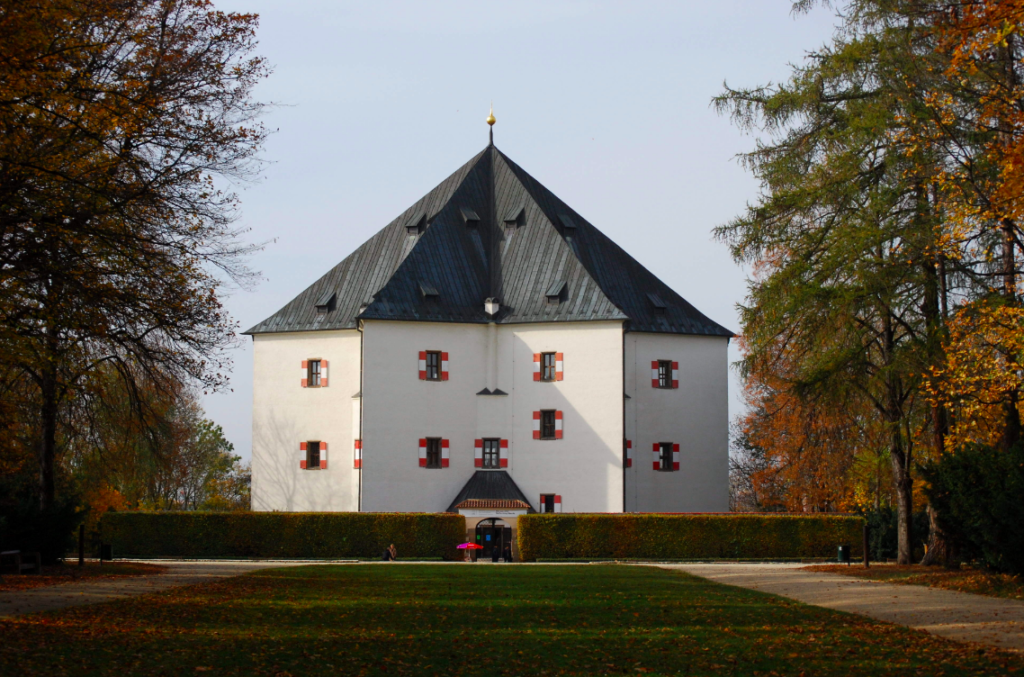
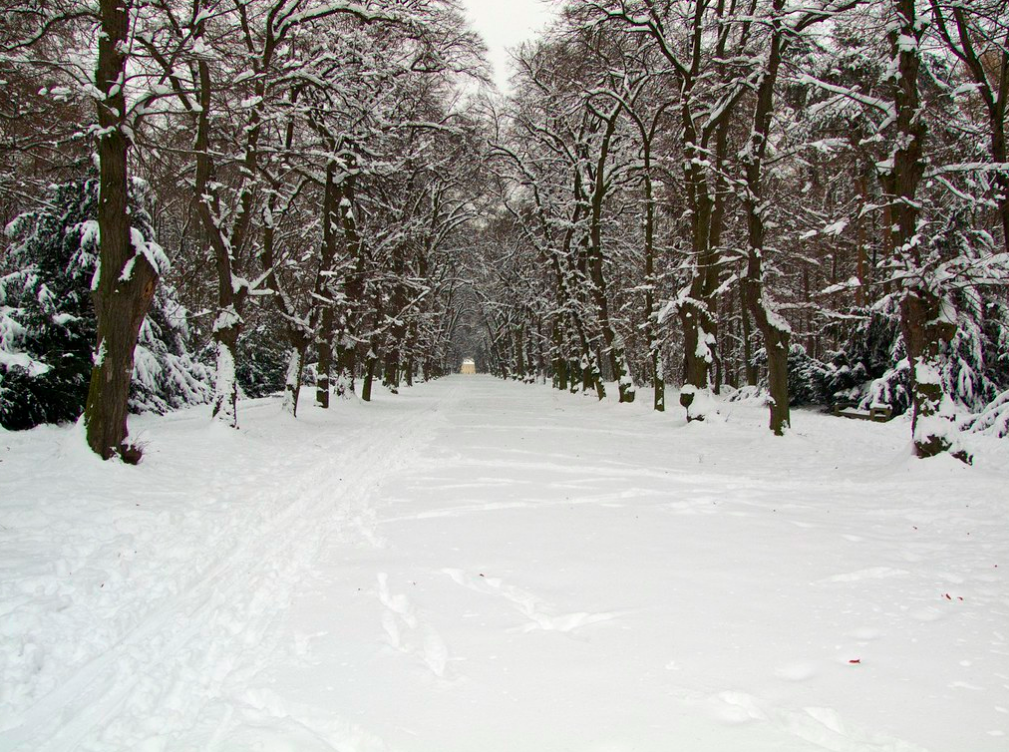
International Schools of Prague will celebrate Halloween 2019 in Sacre Couer church. The event is open to all high school/upper school students ONLY.
It’s organized by parents from ISP, PBIS, EISP, Riverside and other International Schools and will take place at Sacre Coeur Church, one of Prague’s epic event locations, (Holeckova 29, Prague 5, near Novy Smichov).
Students will have the unique chance to meet classmates from other schools, and celebrate Halloween American style.
Leave the trick or treating for the kids and dance to a live DJ, best costume contest with amazing prizes to Prague’s coolest entertainment attractions like GOLEM VR at Hamley’s, HOP ARENA, The Chamber Horror House and many more. Plus, all food and drink included.
This is a nonprofit event and proceeds go to TRF.org, a charity foundation Now supporting families in the Czech Republic.
Tickets are on sale now here
Just released, World of Airports is a new modern airport management game created by Czech developers together with Prague Airport.
It all started as a small fun project, with their first game AirportPRG, but after thousands of downloads, they have created a new one with more options. World of Airports adds new features such as airport expansion, story mode, multiplayer as well as featuring stunning visuals.
It offers an authentic virtual environment in which each player controls the airport and the airline. Directly at Václav Havel Airport, the game was officially presented by the game journalist, Alžběta Trojanová, and aerobatic aviator Petr Kopfstein.
Players can build their airline, expand available connection networks with a new destination and customize livery of their fleet. You get to upgrade the airport facilities and boost up the efficiency of handling other players and generic traffic airplanes.
Besides Václav Havel Airport Prague, the main airport in the game, players have a choice of airports in Innsbruck, Austria and Bari, Italy (more playable airports to come upon release). You get to expand your fleet from the smallest propeller passenger aircraft to large wide-body jetliners. Play online with your friends across platforms (Android and IOS players will share the same online game server), and even download the game using a QR code, which you can find, for example, at observation points near the airport.
Players can also look forward to building the airport of the future in the advanced stage of gaming, as the development of Václav Havel Airport in the game will be in line with how it should look.
According to Martin Kučera, Executive Director of Air Operations at Prague Airport, World of Airports is an exciting combination of entertainment and simulation of real traffic. Through the game, the public can understand what airport traffic involves and how demanding it is.
World of Airports builds on the success of 2017 AirportPRG, which brought players to the Ruzyne airport in the 1930s and 1940s, with thousands of downloads. With World of Airports, creators have listened to the wishes of the community and built a game from the modern era.
Aviation fans will be pleased that the creators took much attention to the details. Everyone else will be thrilled by the pleasant gameplay or the ability to play online with friends across platforms. World of Airports can be downloaded for free from the App Store or Google Play and played by users of mobile devices running iOS or Android.
Download it, take control of the skies and dispatch your fleet in the World of Airports.
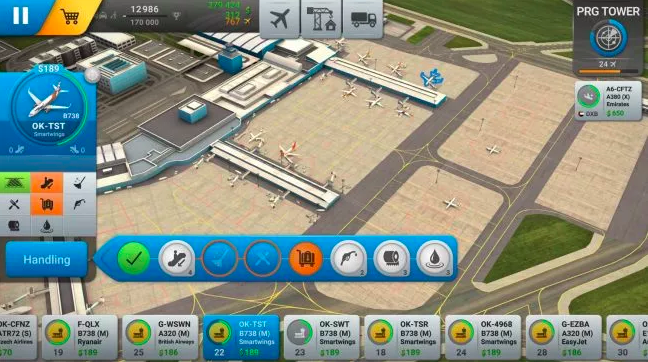
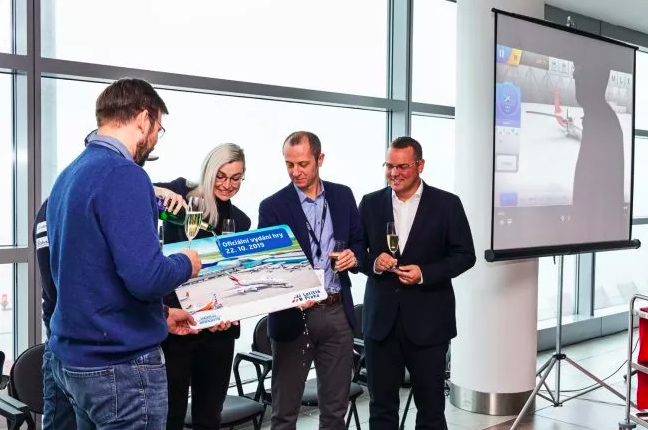
Prague will see new concrete additions in the coming years. The “Prague: Next” exhibition—which visitors could see in the Mánes Exhibition Hall—revealed the architecture’s direction of individual city districts.
The exhibition, organized by Czech Architecture Week Prague, presented over 190 present and future visions of urban development in the Czech capital. Visitors had the opportunity to see a number of models of buildings and look under the lid of the preparation of magnificent buildings. At the same time, the exhibition charted the development of Prague from 1918 to 1938.
Residence U Milosrdných
- Location: U Milosrdnych, Prague 1
- Architect: Fránek architects s.r.o.
- Realization: 2020-2021
The building of the apartment house U Milosrdných seeks to respect the historical center of Prague, and its architecture is inspired by textiles and fabrics. This inspiration is also evident in details such as the undulating and serrated facade.
Smíchov City
- Location: Smíchovské nádraží, Prague 5
- Architects: A69 architects, Cuba and Pilar architects, Haascookzemmrich STUDIO 2050, Chalub architects, Labus – AA – Architectural studio + IGLODO, D3A, Projectile Architects
- Realization: 2019-2020
Smíchov City will be a modern multifunctional district that will be built in the area of the former freight station Praha-Smíchov (on an area of 20 hectares). It will provide housing for approximately 3,300 inhabitants. A number of shops, restaurants, and offices will be built on-site, providing facilities for 9,000 jobs.

Smichov City
Victoria Palace
- Location: Vítězné náměstí, Prague 6
- Architect: Jakub Ciger architects
- Realization: 2019-2020
Victoria Palace will be a unique apartment building that will grow up between the streets of Jugoslávských partyzánů and Verdunská. According to the project, the building interconnects contemporary modern architecture with the historical intention of the palace neoclassical look of the Victory Square from the 20th century by the renowned architect professor Antonín Engel.

Victoria Palace in Prague 6
Residence Palata
- Location: Holečkova, Prague 5
- Architect: Ing. Jan Šesták
- Realization: 2019
In an attractive location under Strahov is a residential project, which will provide a quiet living next to the Kinsky garden. The name of the project reflects the history of the place where the former homestead Dolní Palata used to stand. The project will be built on the site of the historic building U Modrého Zvonu.
Green Point
- Location: Mozartova, Prague 5
- Architect: AHK architekti, s.r.o.
- Realization: 2017-2019
The GREEN POINT office building is growing near Mozartova and Plzeňská streets. The building will offer nine aboveground and three underground floors. The building will be equipped with modern technologies and at the same time reflect the requirements for ecological sustainability.

Green Point at Andel
New Town Hall Prague 12
- Location: Generála Šišky, Prague 12
- Architect: LOXIA a.s.
- Realization: Under construction
Prague 12 will soon be one of the most modern city halls in the capital. The architects also focused on making the building look timeless, combining three basic elements. The first is cubes that are lined up along the street and delimit the entire area. The main facade is oriented to the west, from where visitors of the office will flow. Finally, the illuminated pillared facade with a clock will define the entire town hall.
Park Kavčí Hory
- Location: Kavčí hory, Prague 4
- Architect: Josef Pleskot
- Realization: in preparation
A modern park will be built on the site of the unused brownfield, which will offer Prague citizens a place to relax with plenty of greenery. The winning design by Josef Pleskot came from competition under the auspices of the Czech Chamber of Architects.

Park Kavčí Hory
It is now 98 years since Czechoslovak national airlines launched its regular service, becoming one of the world’s first air carriers.
The first flight, from Prague to Bratislava, took off on October 29, 1923. It was only 20 years after the Wright Brothers assembled the first engine-powered plane ever – finally enabling mankind to fly.
“It was an Aero A-14 Brandenburg aircraft, it was an adapted military plane that the then Czechoslovak Airlines obtained from the Defence Ministry, including military pilots who remained on the ministry’s payroll. There was only one pilot in the cockpit, Sergeant Major Karel Brabenec, and there was only one passenger on board. The plane also carried a few grams of mail, so it did not have a heavy load.”
The Bratislava flight should have been handled a day earlier, on the occasion of the 5th anniversary of the foundation of Czechoslovakia.
The weather on 28 October 1923 foiled the plans. Therefore, instead of the originally planned flight, they only performed a symbolic flight around Kbely.
Czech Airlines was formed as a state airline company and was founded as Czechoslovak State Airlines on October 6, 1923. Their first chief pilot was Karel Brabenec and the ground speed of their first aircraft was 115 km/h.
Seven years later, ČSA takes off on their first international flight to Zagreb on July 1, 1930.
In 1957 ČSA became the third of the world’s airlines to fly jet services, taking delivery/putting in service the first Tupolev Tu-104A in 1957.
ČSA was the only airline other than Aeroflot to operate the Tu-104. The service operated by the Tu-104A from 1957 between Prague and Moscow was the first jet-only connection (other airlines used both jets and piston/turboprop aircraft simultaneously).
The first transatlantic services started on 3 February 1962 with a flight to Havana, using a Bristol Britannia turboprop leased from Cubana de Aviación.
ČSA’s transatlantic flights were code-shared with Cubana’s services to Prague, and Cubana’s crews provided initial training and assistance in the operation of the Britannias.
In order to commemorate the 101st anniversary of the declaration of Czechoslovakia, today you can visit several galleries, buildings and museums for free.
- Mayor’s Residence: come and admire impressive halls, lounges and other rooms designed in Art Deco styles. You will be guided through the lounges where receptions of official guests take place.
- Marianske náměstí
- From 9 am to 6 pm
- New City Hall: you can see the Great Conference Hall on the first floor, where the City Council meets and seminars are held. The building was completed in 1911, its architect is Oslvald Polívka.
- Mariánské náměstí 2
- From 9 am to 6 pm
- Škoda Lounges: the palace was built as an administrative building for Škoda Works, according to a design by architect Pavel Janák in 1924–26.
- Jungmannova 35/29
- From 9 am to 6 pm
- Nostic Palace: This large early Baroque palace is located in Lesser Town, not far from the Charles Bridge. It is a harmonious structure, well adapted to the captivating streets of Lesser Town.
- Maltézské nám. 471/1
- From 9 am to 6 pm
- Department of Agriculture
- Těšnov 17
- From 10 am to 3:30 pm
- Ministry of Labour and Social Affairs
- Na Poříčním právu 1
- From 9:30 am – to 14:30 pm
- Municipal House: the Municipal House stands at the site of the royal residence called King’s Court and it was built from 1905 to 1911 according to the project of architect Antonín Balšánek and Osvald Polívka.
- nám. Republiky 5
- From 9 am to 4 pm
- Senate of the Czech Republic: the palaces became the property of the Czechoslovak State in 1945 and since then have been used by various state institutions. The Senate of the Parliament of the Czech Republic took its seat in those palaces in 1996.
- Valdštejnské nám. 17/4
- From 9 am to 4 pm
- Kramář’s villa: since 1998 it has been the official residence of the Prime Minister of the Czech Republic. Although it is difficult to categorize the architectural style of the villa, as the Neo-Baroque features are complemented by typically Art Nouveau elements, it is considered one of the most striking examples of Prague villa design.
- Gogolova 1
- From 10 am to 4 pm
- Chamber of Deputies
- Malostranské náměstí 19
- From 9 am to 4 pm
November in Prague paves the way for the holiday season with lots of festive events!
1) Concerts
Prague has a great selection of music venues of all sizes, which means there are frequently some internationally touring artists coming through town. You’ll see a few big names in November:
- Lewis Capaldi – November 7
- Sarah Brightman – November 8
- Little Mix – November 21
- Skillet – November 28
- Andrea Bocelli – November 30
2) St Martin’s day
11th November is St Martin’s day and the one-day festival largely revolves around food and specifically, goose. Almost all restaurants in the centre will have a St Martin’s goose menu and be serving special St Martin’s wine.
3) Theatre
Blacklight theatre has become a staple in Prague’s theatre community.
These performances are great for audiences of all ages and nationalities, as they are nonverbal and therefore without a language barrier. IMAGE Blacklight Theatre is one of the main spaces presenting this type of entertainment.
There will be multiple performances throughout the month of November.
4) Christmas Market
The Christmas Market at Prague Castle opens on November 23, 2019, and runs through the first week of January 2020. More than 70 stallholders will display their wares at Christmas markets here.
5) Whisky Life!
Whether you’re a whisky connoisseur or simply curious, the Whisky Life! Festival is a perfect way to learn more and appreciate this spirit. Food vendors will be onsite so you won’t go hungry as you sample all the spirits and cigars.
6) Free Art Exhibit
Until November 30, 2019, you can see an impressive photographic exhibition covering the 1989 Fall of the Iron Curtain in Central Europe.
The exhibit is on display at Prague Castle and is free to view from 10:00 am – 18:00 (6:00 pm). The photos are from multiple photographers who were front and center for these events 30 years ago.
By June 2020, Běchovice will have another 56,000 trees added, in addition to the “V Panenky” forest built. Parks in Petřín and Stromovka will also grow in numbers of trees. Hopefully, over 186,000 trees are planted by the end of this year.
Further planting is planned for next year in connection with the construction of a new wildlife rescue station. Prague City wants to expand the Stromovka Park as well with 100 new trees implanted.
The park invites the public to help plant them on November 9 and 21. Joint planting is planned on Nov. 13 in Petřín and Nov. 27 in the Třešňovka orchard in Hrdlořezy. Reconstructions of the Prague parks this year is budgeted at 68 million CZK (2.65 million euros).
“Most of the trees were newly planted as part of afforestation of the original agricultural land,” said Vít Hofman, spokeswoman for the municipality. These were mainly urban areas in parts of the city which are quite distant from the wider center (i.e. Vinoř, Běchovice or Slatina).
It is estimated that the trees will still be the most expensive in the city’s outskirts. Forests play a vital role in the city’s life. Trees consume carbon dioxide and return oxygen, heal the environment, and affect the climate.
“For example, a hectare of beech forest can absorb 63 tons of dust per year,” biologist Zdenka Zavičáková said. Due to summer heat and drought, the important fact is that the forest is a reservoir of groundwater. Its roots capture the surface rainwater and help ensure its accumulation.
What will be behind the round windows on the Prague riverside? Twenty wall cubicles will contain galleries, studios, and cafés.
The Open Day shows visitors the repaired areas, in a provisional regime though, as the renewed dungeons opened to the public yesterday and today (October 24th).
They should start regular service in November, as the full procedure is not possible yet due to an unfinished occupancy permit process. After completing the occupancy permit process and moving to regular services, these new facilities will quickly host their visitors and survive the flood in the upcoming winter.
The organizers have also prepared guided tours or a boat ride between the two riverbanks. On both embankments, there should now be three galleries, three studios, three toilets, two workshops or a branch of the Municipal Library. The rest will be filled with cafes.
Tenants and operators of individual cubicles will show their future functioning. They are modernly equipped for the flood season the whole year. Their most distinctive element is the circular glass, which acts as a revolving door. The movement is controlled by the sensors and motor so that it opens and closes quickly and prevents collisions with visitors.

Photo: Lidia T. for Prague Morning

Photo: Lidia T. for Prague Morning

Photo: Lidia T. for Prague Morning

Photo: Lidia T. for Prague Morning

Photo: Lidia T. for Prague Morning
With the support of the Capital City of Prague, Integration Centre Prague o.p.s. offers foreigners free of charge interpreting and assistance of an intercultural worker who is now available at the City Hall Škodův palác building on a regular basis: every Monday from 9:00 to 15:00, in office no. 115, National Minorities and Foreigners Department.
You can arrange for assistance at other time and on other days on an agreement. The intercultural worker’s services are provided in Czech, English, Russian and Chinese languages.
Contact info:
- Mgr. Vera Bárász
- phone: 776 693 272
- email: eng@icpraha.com
Available at the Prague City Hall:
- Where: Prague City Hall, Škodův palác – Jungmannova 335/29, 1st floor, office 115
- When: Monday 9:00 – 15:00
- (National Minorities and Foreigners Department)
On other weekdays, appointments can be arranged on an agreement.
Intercultural work is intended for overcoming language and socio-cultural barriers during communication between foreigners and officials at different authorities and other institutions. On the one hand, it facilitates the officials’ work, on the other hand, it helps foreigners handle various life situations.
The Integration Centre’s team of intercultural workers also offers these services for Vietnamese, Ukrainian and Arabic-speaking clients. You can find contact information of all the intercultural workers here.
There are other organizations offering services of intercultural workers in Prague as well. You can find the complete list of those at the informational website for foreigners –Prague for all. Prague’s long-term goal is to make people from foreign countries feel welcome in the Capital City so that the motto of the abovementioned website could hold true, i.e. that Prague is, in fact, a capital for all.
In which situations can you use the services of an intercultural worker?
- Interpreting during communication between foreigners and workers of different institutions;
- Assisting foreigners with filling out forms;
- Providing short translations for workers of institutions;
- Accompanying foreigners to other public institutions;
- Assisting foreigners with orientation in Czech society, providing basic counselling and explaining how the Czech institutional system works;
- Arranging contacts for other related services (legal and social counselling at Integration Centre Prague; other public institutions; non-profit organizations if needed).

